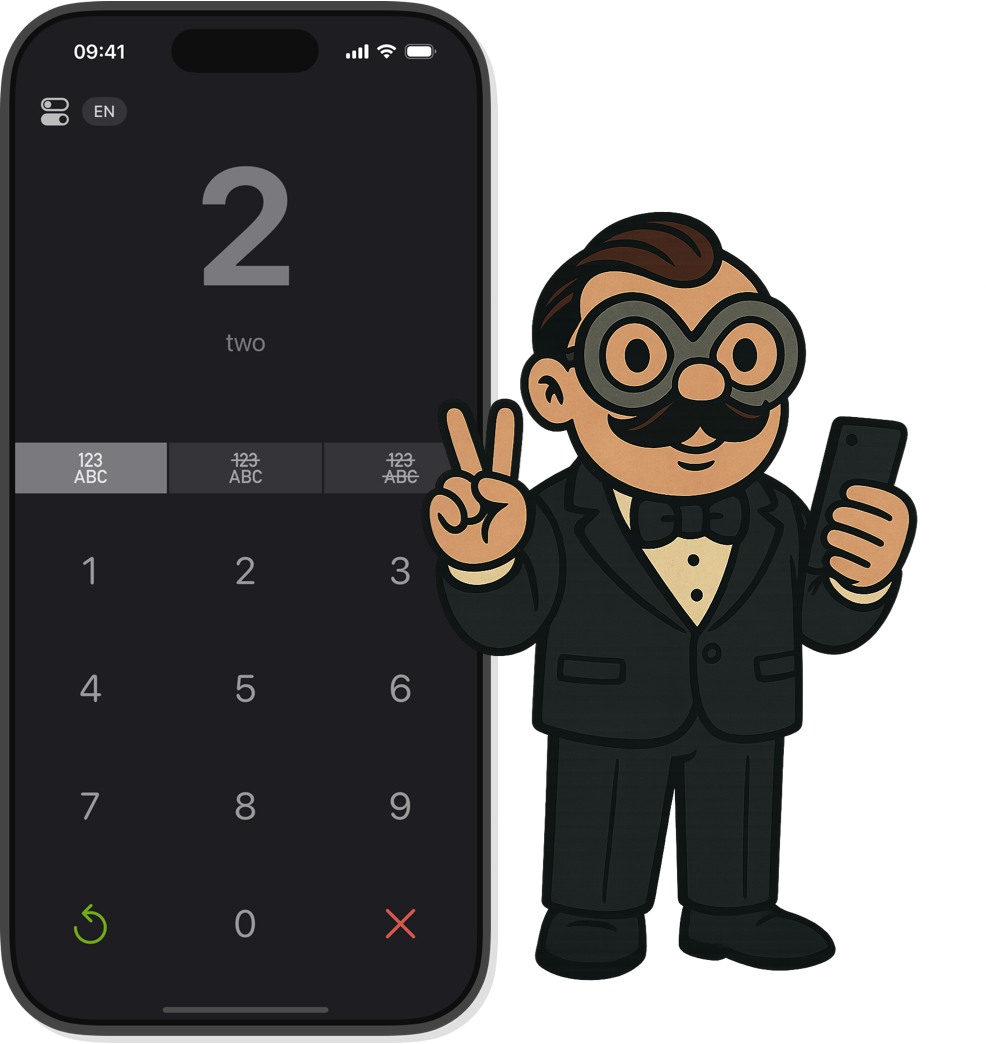Understanding French Numbers: The Logic Behind "soixante-dix" & "quatre-vingts"
French numbers are famous and notorious for their unique rules starting at 70. In this guide, we'll explain the historical vigesimal system, walk you through all numbers from 1-100, and show you how to master French numbers with ease.


How French Numbers Are Structured
The French number system is very logical up to 69, but has unique characteristics for the numbers 70, 80, and 90, which are based on a historical base-20 (vigesimal) system.
- 1-10
-
Basic numbers: un, deux, trois, quatre, cinq, six, sept, huit, neuf, dix
Regular basic numbers that must be memorized. Un becomes une with feminine nouns.
- 11-16
-
Special forms: onze, douze, treize, quatorze, quinze, seize
These numbers have their own unique forms and don't follow a systematic pattern. They must be memorized.
- 17-19
-
Formation with "dix-": dix-sept, dix-huit, dix-neuf
Combination of dix + basic number with hyphen.
- 20-69
-
Regular pattern: vingt, trente, quarante, cinquante, soixante
Very logical: tens + hyphen + basic number. For 21, 31, 41, 51, 61, et is inserted: vingt-et-un, trente-et-un.
- 70
-
Special case: soixante-dix (60+10)
Not septante, but soixante-dix. 71-79: soixante-et-onze, soixante-douze, soixante-treize...
- 80
-
Special case: quatre-vingts (4×20)
Historical base-20 system: quatre-vingts with -s at the end. For 81-89, the -s is dropped: quatre-vingt-un.
- 90
-
Special case: quatre-vingt-dix (4×20+10)
91-99: quatre-vingt-onze, quatre-vingt-douze, quatre-vingt-treize...
- 100+
-
Hundreds: cent (100), cent un (101)
From 200: deux cents (with -s), but deux cent un (without -s when followed by other numbers).
French Numbers 1 to 100
All French numbers from 1 to 100 at a glance. Perfect for systematic learning and quick reference.
Test Your French Number Understanding
Can you match these numbers correctly? How confident are you with French numbers from 1-100?
Pro tip: App for targeted number training. Did you know there's an app dedicated exclusively to numbers in foreign languages? With the Numfred app, you can specifically learn French numbers.
Learn French numbers with the Numfred App!
The app designed to help you master listening comprehension for numbers in foreign languages.
- Free basic number ranges
- Learn numbers in 13 languages
- No subscription. No registration.
- Ad-free

Hundreds, Thousands and Large Numbers
Here are the most important large numbers and their formation:
- 100
-
cent
Standalone: cent. In combination: cent un, cent deux…
- 200-900
-
deux cents, trois cents, quatre cents, cinq cents, six cents, sept cents, huit cents, neuf cents
With -s at the end: deux cents, but without -s when followed by other numbers: deux cent un
- 1,000
-
mille
Thousand. Invariable: deux mille, trois mille
- 1,000,000
-
un million
- 1,000,000,000
-
un milliard
- 1,000,000,000,000
-
un billion
Common Pitfalls When Learning Numbers
Understanding or pronouncing numbers quickly can be challenging. These cases often lead to confusion:
-
The 70/80/90 System:
soixante-dix (70), quatre-vingts (80), quatre-vingt-dix (90) are often confusing for English speakers. Remember: 70 = 60+10, 80 = 4×20, 90 = 4×20+10. -
The -s in quatre-vingts:
Quatre-vingts (80) has an -s, but quatre-vingt-un (81) doesn't. The -s is dropped as soon as another number follows. -
Liaison with numbers:
Numbers often form liaison: deux enfants = [dø‿zɑ̃fɑ̃], trois ans = [trwa‿zɑ̃], six euros = [si‿zøʁo]. -
Silent final consonants:
Six and dix are pronounced differently: standalone [sis]/[dis], before consonant [si]/[di], before vowel with liaison [si‿z]/[di‿z]. -
Gender agreement:
Un/une changes according to gender: vingt-et-un hommes but vingt-et-une femmes. Also with hundreds: deux cents euros vs. deux cent une pages.
Understanding and Using Numbers in Daily Life
In spoken French, numbers are often pronounced quickly – especially when used for:
-
Time:
Il est une heure = It's one o'clock
Il est deux heures = It's two o'clock
deux heures et quart = quarter past two (2:15 PM)
deux heures et demie = half past two (2:30 PM)
trois heures moins le quart = quarter to three (2:45 PM)
Il est midi = It's noon (12:00 PM)
Il est minuit = It's midnight (12:00 AM) -
Money amounts:
dix euros cinquante = €10.50
Ça coûte vingt euros = That costs twenty euros
fric, flouze = money (colloquial)
pognon = money (slang)
thune = money (youth slang) -
Years:
1999 → mille neuf cent quatre-vingt-dix-neuf
2005 → deux mille cinq
2024 → deux mille vingt-quatre
l'an 2000 = the year 2000 -
Basic arithmetic:
3 + 3 = 6 → trois plus trois égale six
5 - 3 = 2 → cinq moins trois égale deux
4 × 2 = 8 → quatre fois deux égale huit
10 ÷ 5 = 2 → dix divisé par cinq égale deux -
Fractions and decimals:
½ → la moitié, un demi
¼ → un quart
0.5 → zéro virgule cinq
2.71 → deux virgule soixante-et-onze
75% → soixante-quinze pour cent -
Dates:
le premier janvier = January 1st
le deux février = February 2nd
le vingt-et-un mars = March 21st
en mille neuf cent quatre-vingt-neuf = in 1989
Unique Characteristics of French Numbers
French has certain linguistic conventions and unique features when it comes to numbers – in spelling, pronunciation, and expression. Here's an overview of typical characteristics:
-
Regional differences:
In Belgium and Switzerland, different forms are often used: septante (70), huitante (80, mostly in Switzerland; "octante" is very rare), nonante (90) instead of the French system. -
Number formatting with spaces:
In French, thousands are separated with spaces or periods, decimals with commas:
1 000,50 or 1.000,50 = one thousand point fifty -
Ordinal numbers with gender:
1er, 1ère → with superscript letters for gender (not 1º, 1ª) -
Million and milliard:
Un million (1,000,000), un milliard (1,000,000,000). Note: million and milliard are nouns and take an -s in the plural. -
Numbers in colloquial speech:
In everyday speech, numbers are often shortened: une brique = one million (slang), un sac = 10,000 francs (historical), une plaque = 1,000 (slang).
Discover Other Languages:


